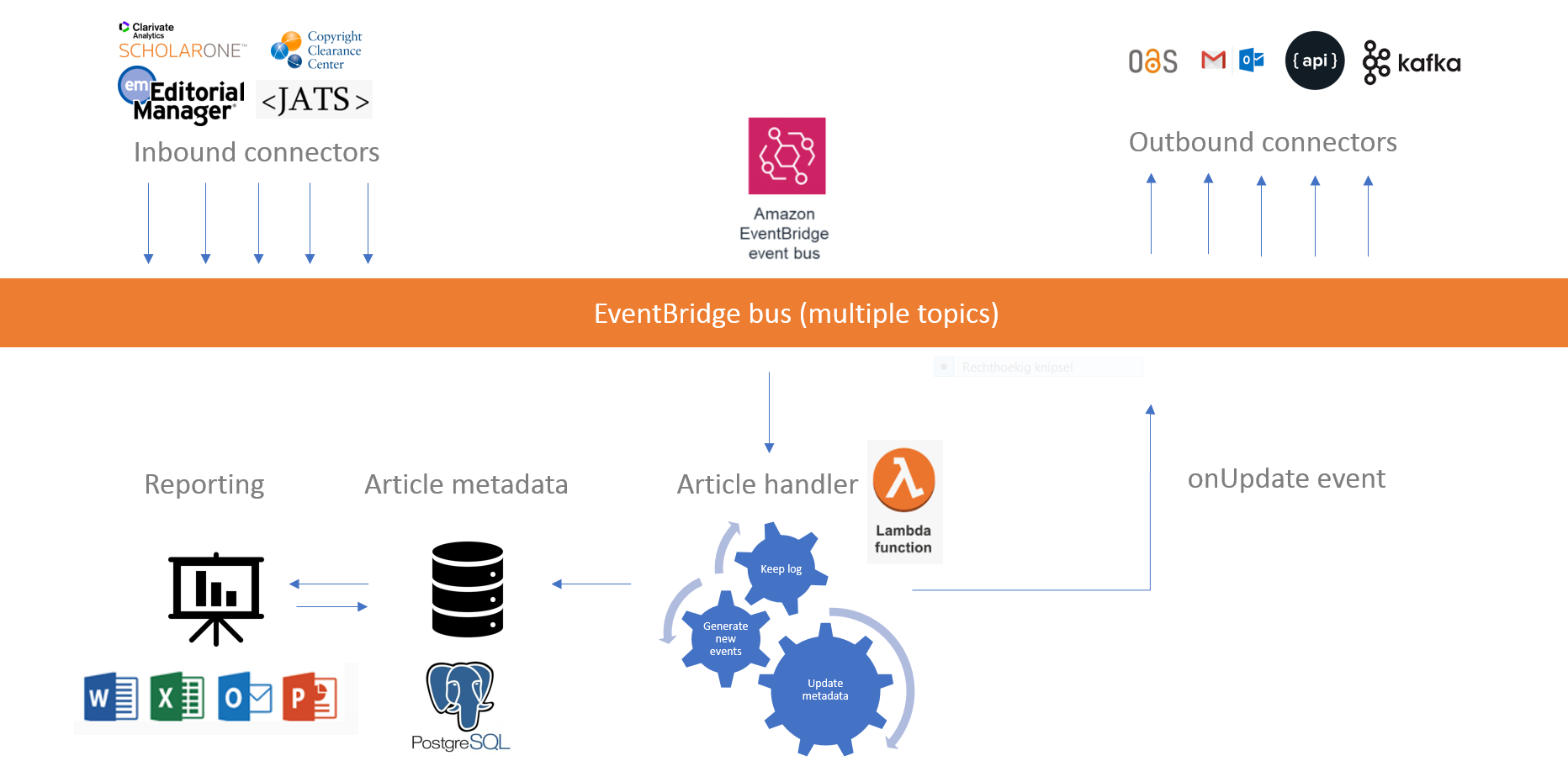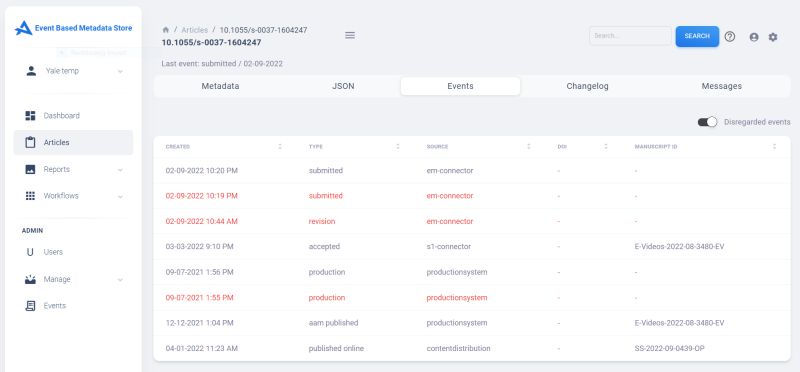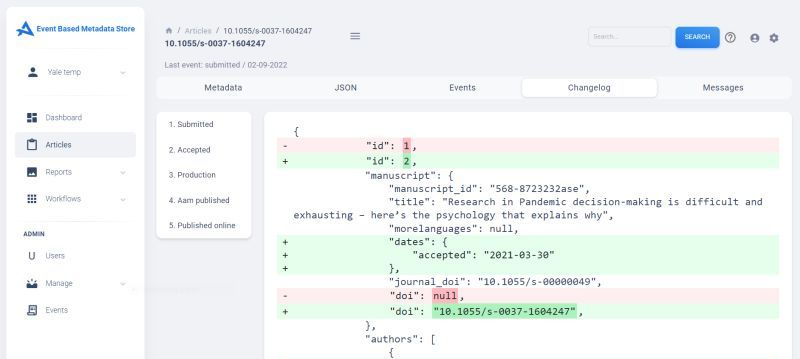
Event Based Metadata Store
We are delighted with our collaboration with Thieme, a renowned medical publisher from Germany. A customized version of the Publication Tracker grew into another open source tool called the Event Based Metadata Store. This tool has been developed in close partnership with Thieme.
Connect your publishing workflows with Event Based Metadata Store. Original requirements stressed the necessity of 1) Interoperability of systems and 2) High quality metadata.
-
When
2022 - 2023
-
Client Name
Thieme Verlag
Interoperability of systems
The foundation lay in an event-based architecture, wherein inbound connectors prompt events, or events trigger outbound connectors.
Both the Publication Tracker and the Event Based Metadata Store house articles with multiple associated events. While both can be considered event-based, the Event Based Metadata Store stands out as an authentic event-driven architecture. This architecture operates on events to enable communication between loosely connected services, systems, and workflows. It is a common structure in modern applications developed using microservices, with an event denoting a change in state or an update, such as the acceptance or publication of an article.
Let's delve deeper into the concept of "decoupled services, systems, and workflows." A publisher, such as Thieme, typically operates various systems designed to address specific aspects of the overall publishing workflow. The seamless interoperability of these systems is crucial. Interoperability refers to the capacity of decoupled computer systems or software to exchange and effectively utilize information. An event-driven architecture ensures this interoperability among systems. Our Event Based Metadata Store not only embraces interoperability but also incorporates a central metadata store. This central repository simplifies reporting across all systems and workflows by consolidating metadata in one easily accessible location. This centralized approach streamlines the process, facilitating comprehensive reporting throughout your publishing infrastructure.
Let's consider an example: the "published" event. The moment of publication undoubtedly qualifies as an event capable of initiating "communication between decoupled services, systems, and workflows." In the context of the Publication Tracker, this generally involves dispatching a Publication Notification message via OA Switchboard. However, what if you want to do more? What if you wish to not only notify authors via marketing emails but also alert publishing staff, initiate content distribution, transmit data to analytical systems, and other related actions? A seemingly simple event—such as an article being published—could potentially trigger a cascade of interconnected services and workflows. To effectively manage this complexity, it's essential to consider adopting a genuinely event-driven architecture rather than solely relying on a metadata store. An event-driven approach allows for orchestrating an array of services and workflows beyond basic communication, ensuring a more comprehensive and efficient system.
The core contrast resides in the architecture: the Event Based Metadata Store is built on a truly event-driven framework, whereas the Publication Tracker is primarily centered around a metadata storage system. This architectural difference is a key factor distinguishing these systems. For enterprises prioritizing system interoperability, such as Thieme, the Event Based Metadata Store delivers a much more appropriate solution.
High quality metadata
Metadata is captured for every event, and stored in a central place to accommodate reporting across all your systems.
The data model of the Publication Tracker is primarily centered on OA Switchboard. As a result, we specifically store data in the OAS message model. This approach has its advantages. An active working group consistently oversees and maintains this message structure standard, which is anticipated to evolve into an eventual NISO standard. The benefit of aligning with this evolving message standard is that the Publication Tracker seamlessly and automatically updates along with it, ensuring it remains up-to-date - a clear advantage.
However, standards are agreements among parties. In this case, discussions arise about specific fields and structures. For instance, in OAS messages, funders and grants are kept separate, while publishers might have nested data (like associating a grant with a specific funder). Adhering to a standard means maintaining uniformity, which doesn't allow for accommodating such nested data in the Publication Tracker.
Our Event Based Metadata Store provides a more flexible solution. Its data model can be customized and tailored to meet the specific requirements of Thieme or any of our customers. Unlike being frozen within the tool, the Event Based Metadata Store data model can be adapted to specific needs during the implementation. If Thieme desires to deviate from the standard, they have enought flexibility to do so. This flexibility not only allows for customizations but also inherently broadens the application's scope beyond connectivity with the OA Switchboard.
A customised datamodel is a unique feature of the Event Based Metadata Store and is not available in the Publication Tracker, the light flavor of a metadata store.


